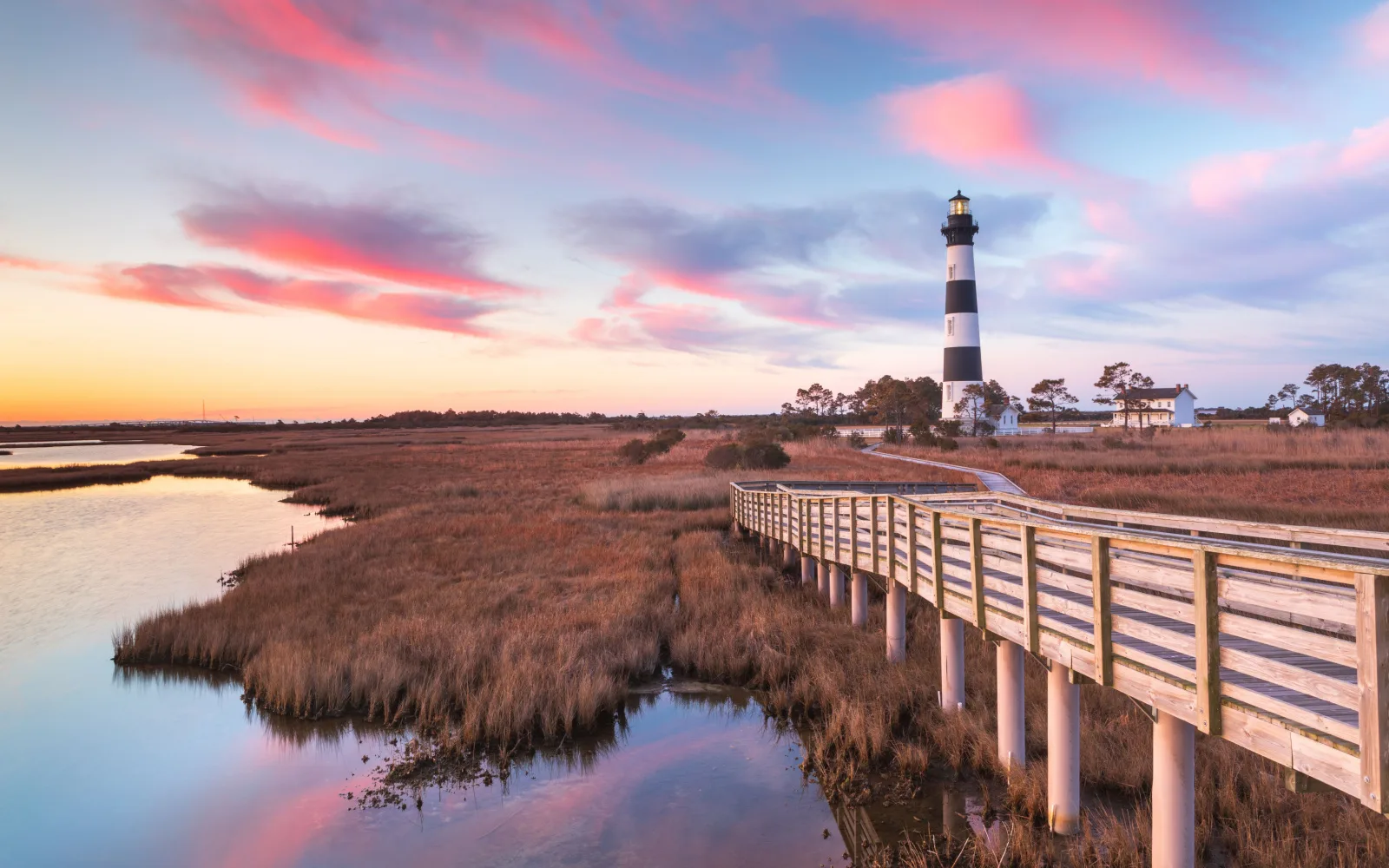What's the best time to visit the Outer Banks?
The best time to visit the Outer Banks is during the summer (June-August), offering ideal beach weather with July temperatures around 85 degrees and ocean waters warm up to 80 degrees in August. All local businesses and attractions are open, including seasonal events like the Lost Colony performances and various festivals, making it a lively time to visit despite the crowds.
The Outer Banks in North Carolina are one of the best beach destinations in the United States for visitors looking for a calm, secluded beach getaway. They’re an island chain located a few miles off the Carolina coast, the last barrier before the Atlantic Ocean.
Besides swimming, you can also climb sand dunes at Jockey Ridge State Park, explore Cape Hatteras Lighthouse, and take a break in one of the picturesque villages.
The laid-back, relaxing atmosphere in the Outer Banks makes a trip any time a delight, but for beach activities, certain seasons are better. We’ll show you the best, least busy, cheapest, and worst times to visit below; let us be your guide!
Overall Best Time to Visit the Outer Banks
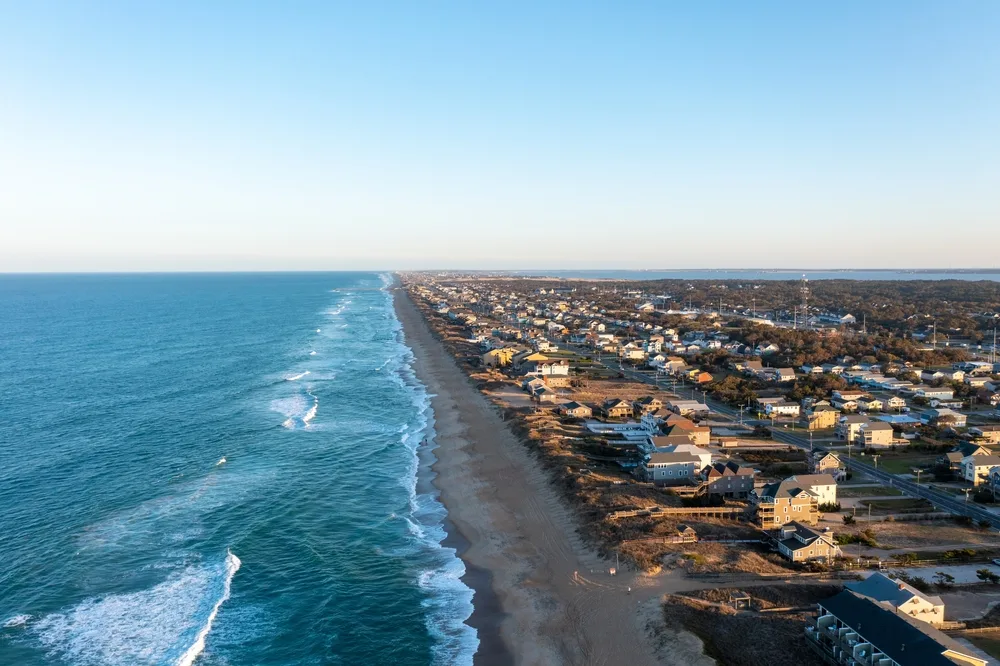
Kyle J Little/Shutterstock
The best time to visit the Outer Banks is during the summer (June-August), when all businesses are open, and you can truly enjoy your time on the beach.
While weather in the Outer Banks never gets too chilly, not even in the dead of winter, the best beach weather is definitely in the summer.
According to official U.S. Climate Data for the Cape Hatteras National Seashore, one of the most popular areas of the Outer Banks, average temperatures are the highest in July, at around 85 degrees Fahrenheit.
The warmer temperatures are pleasant for walking around and working on your tan at the beach. Thanks to the cooling winds from the ocean, it doesn’t get too hot, although summers can be fairly humid.
More importantly, the warmer weather means that water temperatures are at their highest, about 80 degrees by August. The ocean is normally quite cold, except for during the summer, so you want to take advantage of these good swimming conditions, especially if you are planning a trip with children.
The Outer Banks is a region of North Carolina that lives for tourism, which has its downsides in the summer because that means the islands get pretty crowded with other vacationers.
However, since many businesses depend on tourism, they are guaranteed to be open in the summer. You will be able to visit the shops and seafood shacks you want to come see, which may be closed during the off-season.
Certain activities, such as climbing the Bodie Island Lighthouse, are only available in the summer. Adding to the liveliness of the Outer Banks in the summer are the many festivals.
Locals organize the most events in the summer, both to take advantage of the good weather and to give visiting tourists something to do. Popular events include:
- The Lost Colony theater performance (all summer long)
- Outer Banks Rum Festival (June)
- Annual Wright Kite Festival (July)
- Outer Banks Pirate Festival (August)
Besides these top-billing events, expect plenty of other happenings such as running races, fishing tournaments, farmer’s markets, and historic reenactments. Check out the official Outer Banks events calendar for an insight into the fun happenings that go on each year.
Cheapest Time to Visit the Outer Banks
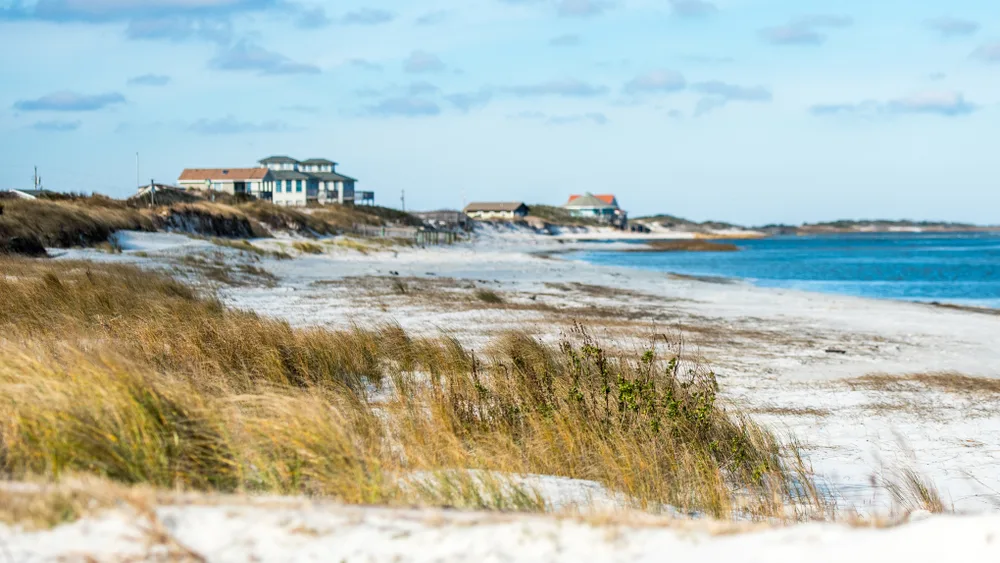
David Louis Econopouly/Shutterstock
The cheapest time to visit the Outer Banks is in the spring (April-May), when you can go exploring and enjoy hotel room discounts. Easter (late March/early April) marks the unofficial start of the season, which means that accommodation options and other businesses begin opening up again.
However, the tourist crowds don’t really come until Memorial Day, which means that accommodation prices stay low. You can find 20-30% discounts compared to peak season rates for hotels, and even more for vacation rentals.
Getting to the Outer Banks is also less expensive before the high season starts. If you are driving to the Outer Banks, the cost of gas and ferry tolls will be the same no matter when you visit.
However, if you are coming from out-of-state and need to fly, the off-season is better. Flights to the nearest airport, Norfolk International Airport, often cost the least in the spring, in April and May.
Part of the reason why prices are so low is that spring weather is fairly unpredictable.
While temperatures are pleasant enough, about 66 degrees by April, spring storms can bring winds and rain, and the ocean is still cold. However, the discounts are worth the price of carrying a light jacket and umbrella for your beach visit.
Least Busy Time to Visit the Outer Banks
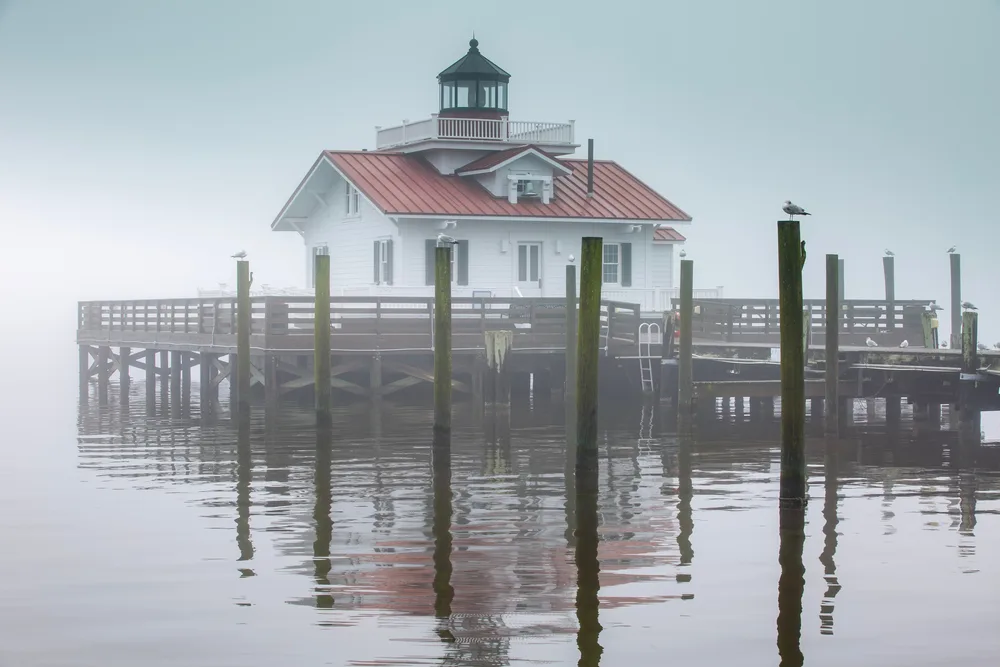
Cvandyke/Shutterstock
The least busy time to visit the Outer Banks is during autumn (September-October), which is a favorite season for many locals.
The crowds begin to thin out by the end of August, but really diminish after Labor Day, when most schools in the United States start up again. There are plenty of visitors that know the beauty of the Outer Banks fall, but far fewer tourists around than in the summer.
The summery weather in the Outer Banks lasts well into October, which has average daily high temperatures of 72 degrees.
The warming rays of the summer sun ensure that the ocean remains warm and pleasant for swimming well into September and October, when the ocean can still reach temperatures of 76 degrees Fahrenheit.
Even if you don’t want to swim in the slightly chillier waters of fall, this is a great time to soak up the laid-back ambience of the beach. Cuddle up next to a bonfire in the evenings and admire the sunset, which locals say is at its best in the fall.
Locals celebrate the end of a successful tourist season with many fun festivals, such as:
- Bluegrass Island Music Festival (October)
- Outer Banks Seafood Festival (October)
This is a great time to get to know the local culture, which values live music, and the specialties of the regional cuisine. Besides the seafood festival mentioned above, you won’t have to wait in long lines or reserve popular restaurants months in advance.
Fall is also a good time to visit Outer Banks for athletes. Events such as the OBX Triathlon in September and sailing, surfing, and fishing championships attract lovers of sports, even if all you like to do is watch.
Worst Time to Visit the Outer Banks
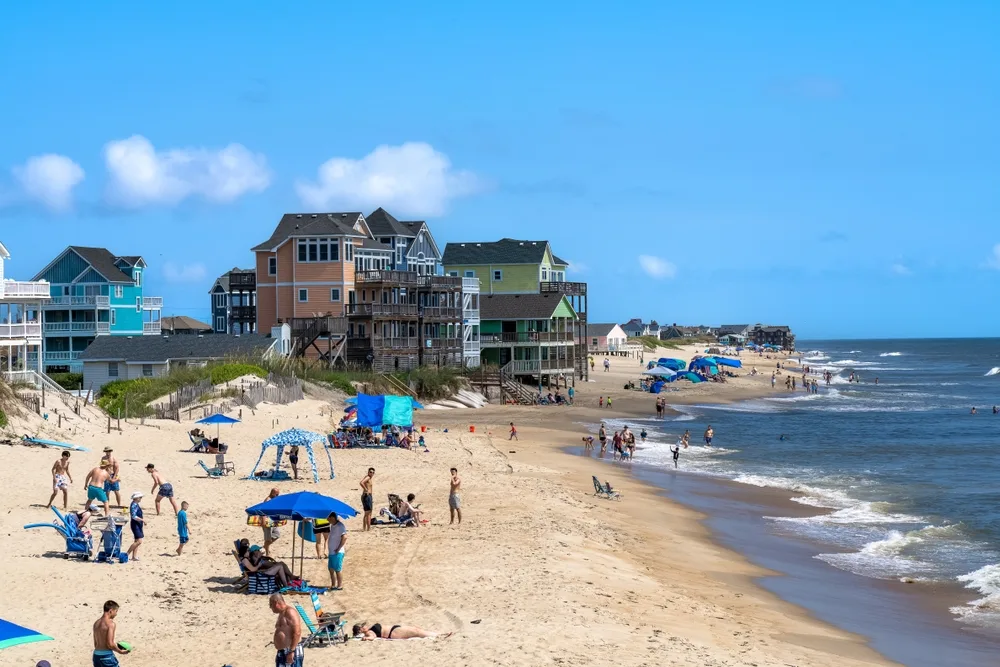
Rodanthe North Carolina – July 17 2022: View of people and vacation homes on the beach as seen from the Rodanthe Pier in the Outer Banks/Kyle J Little/Shutterstock
The worst time to visit the Outer Banks is in the winter, when this tourism-oriented region can feel like a ghost town. Winters in the Outer Banks aren’t very cold compared to places further north.
However, it’s not exactly swimming weather either. Average temperatures on Cape Hatteras are around 52 degrees in January, and can get close to freezing at night. The cold weather keeps most out-of-state visitors away.
There are some benefits to this, such as low prices at hotels that are still open, but it may feel desolate instead of pleasantly crowd-free. The lack of tourists also means that many businesses from restaurants to tourist attractions close, so there isn’t as much to do.
This is definitely the quietest season on the Outer Banks. There are only a few festivals, including Christmas celebrations and Wright Brothers Day on December 17th, celebrating the first flight in the world.
However, if you’re looking to get away from it all and go on brooding walks on the beach, this relative quiet may be a benefit. Some attractions are open year-round, such as the Roanoke Island Aquarium and historic museums.
Outer Banks by Month: Climate & Activities
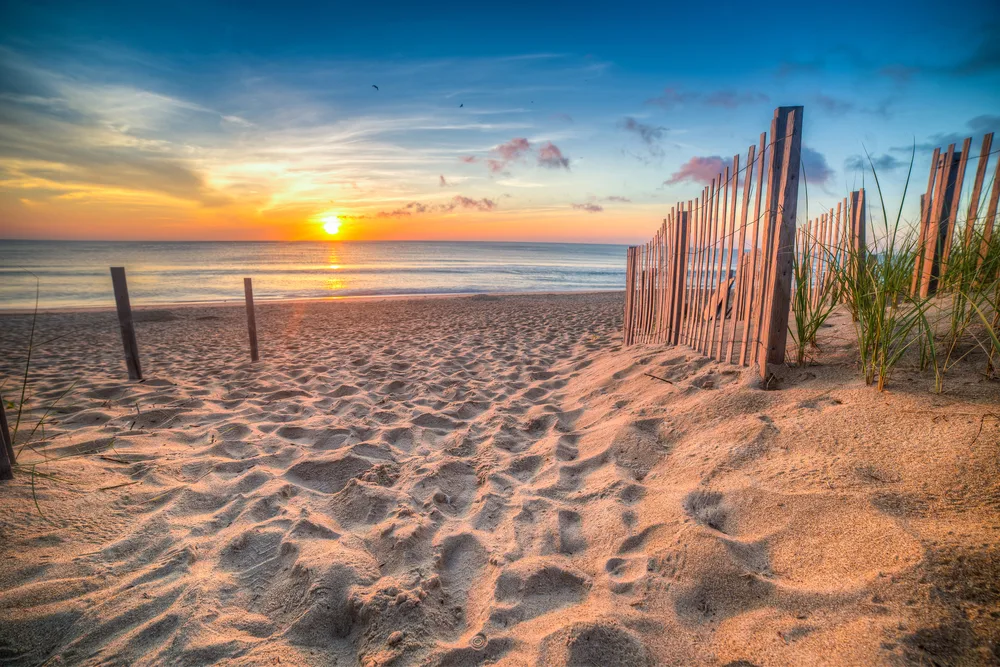
Bopbie/Shutterstock
Still unsure about the best time to visit the Outer Banks? Take a look at our summary of the weather and climate by month below:
January
Winter temperatures on the Outer Banks range from 2 to 12°C (36-54°F). January is a quieter time, ideal for exploring the Wright Brothers National Memorial, visiting the North Carolina Aquarium on Roanoke Island, and enjoying peaceful beach walks.
February
Similar to January, February maintains cool temperatures between 3 to 13°C (37-55°F). Visitors can appreciate the serene atmosphere, explore the Outer Banks History Center, and attend the occasional off-season events and festivals.
March
As spring begins, temperatures range from 7 to 16°C (45-61°F). March is perfect for birdwatching at Pea Island National Wildlife Refuge, hiking in Jockey’s Ridge State Park, and attending the Taste of the Beach food festival.
April
Spring temperatures on the Outer Banks range from 11 to 20°C (52-68°F). It’s an ideal time for enjoying the blooming gardens at Elizabethan Gardens, exploring the Roanoke Island Festival Park, and taking part in the Flying Pirate Half Marathon.
May
May sees temperatures ranging from 15 to 24°C (59-75°F). It’s a great month for beachcombing, visiting the historic Currituck Beach Lighthouse, and attending the OBX Bluegrass Festival.
June
Summer arrives with temperatures between 19 to 28°C (66-82°F). June offers opportunities for water sports like kayaking, exploring the Cape Hatteras National Seashore, and enjoying the vibrant atmosphere at the OBX Watermelon Festival.
July
July maintains warm temperatures from 22 to 31°C (72-88°F). It’s a popular month for beach activities, kite flying at Jockey’s Ridge, and attending Independence Day celebrations and fireworks.
August
Temperatures in August range from 22 to 31°C (72-88°F). It’s an excellent time for fishing charters, exploring the historic Whalehead Club, and attending the New World Festival of the Arts.
September
As fall begins, temperatures range from 19 to 28°C (66-82°F). September offers a pleasant transition, with opportunities for horseback riding on the beach, attending the Outer Banks Seafood Festival, and enjoying the scenic beauty.
October
October sees temperatures ranging from 14 to 23°C (57-73°F). It’s a great month for fall fishing, exploring the Outer Banks Scenic Byway, and attending the Outer Banks Marathon.
November
Fall temperatures range from 8 to 17°C (46-63°F). November is perfect for birdwatching migrations, visiting the Wright Brothers National Memorial, and attending the Hangin’ with Santa holiday event.
December
In December, winter returns to the Outer Banks with temperatures ranging from 4 to 13°C (39-55°F). This time brings opportunities for holiday events like the WinterLights at Elizabethan Gardens, exploring the Outer Banks Christmas House, and enjoying a quiet seaside holiday.
Frequently Asked Questions
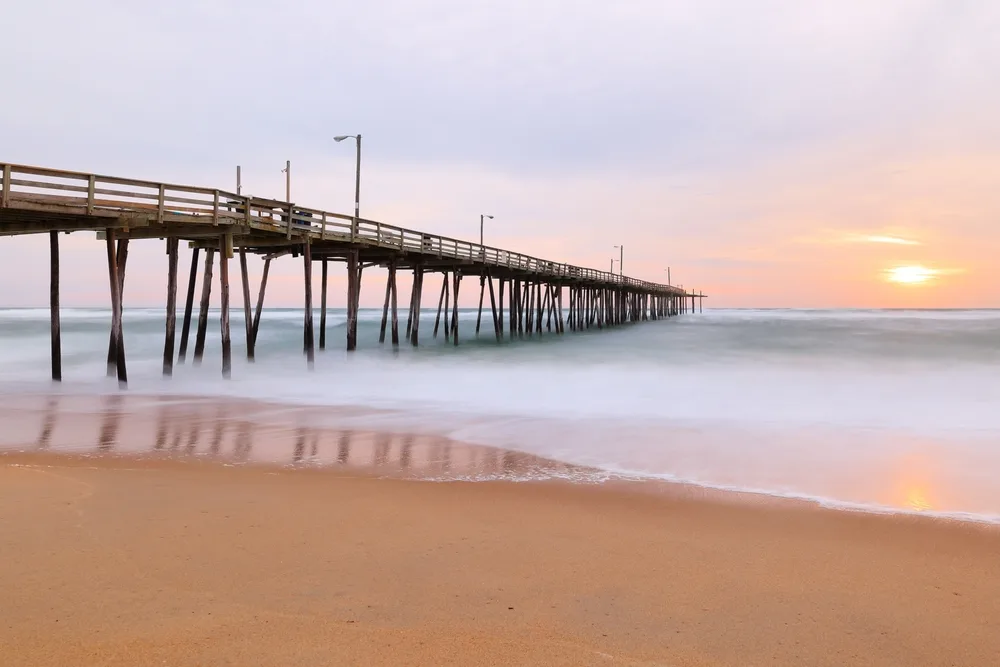
Jay Yuan/Shutterstock
Here are a few of the most common questions people have asked about visiting the Outer Banks:
When is the best time to go to the Outer Banks?
The best time to go to the Outer Banks for beach weather is in the summer, but late spring and early fall are the best to beat the crowds.
Is the Outer Banks warm all year?
The Outer Banks isn’t warm all year. However, winters are chilly but not cold, with temperatures rarely going below freezing.
What months can you swim Outer Banks?
Swimming in the Outer Banks is possible from late May to early October. You can swim outside of those seasons, but with a wet suit.
How many days should you spend in the Outer Banks?
You need at least three days to explore the Outer Banks properly. If you want a relaxing beach vacation, there’s enough to keep you occupied for at least seven days.
When is hurricane season in the Outer Banks?
Hurricane season lasts from June to November, with the worst storms occurring in August, September, and early October. Expect the most rain in the summer.
So, What’s the Best Time to Visit the Outer Banks?
For the quintessential beach vacation, visit the Outer Banks in the summer. However, savvy visitors beat the crowds and high season prices by visiting in late spring and early fall.
So, with so much to see and do and countless amazing times to visit, what are you waiting for — book your trip today and experience for yourself all that the Outer banks have to offer. Happy travels!



